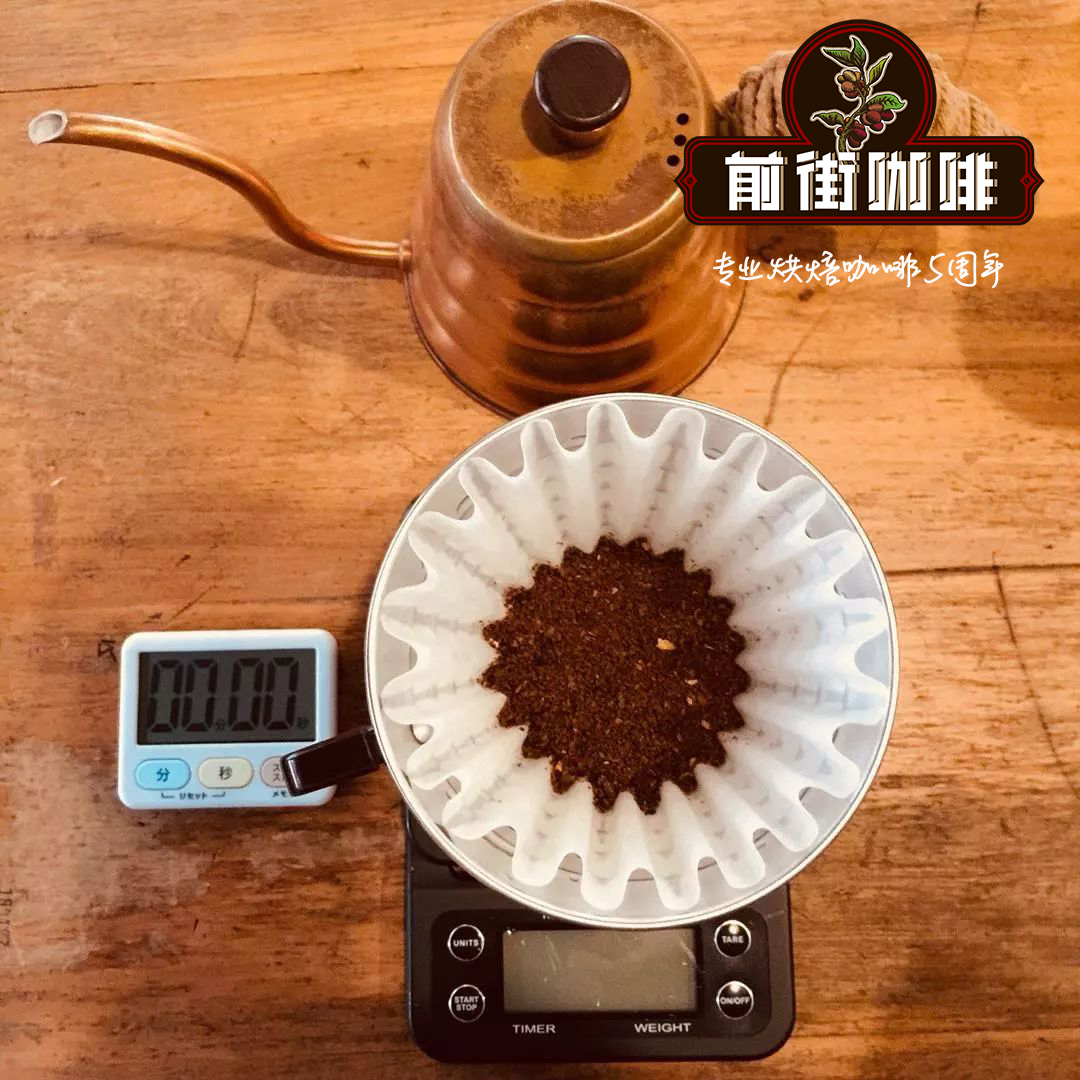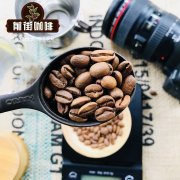Hand-in-hand teaches you to choose hand-brewed coffee beans _ what do you have in hand-what coffee beans are suitable for hand-brewing?

Professional coffee knowledge exchange more coffee bean information please follow the coffee workshop (Wechat official account cafe_style)
Many people like to drink coffee, with the continuous improvement of the quality of life, we used to choose finished coffee or instant coffee, but now we may enjoy making a cup by hand. And if you want to enjoy the good mood of life, you must have good coffee beans before making coffee.
As one of the three major drinks in the world, coffee is no stranger to any of us. Especially among today's young people, many people like to drink coffee, but out of the pursuit of quality life, we are no longer satisfied with drinking only some finished coffee or simple instant coffee, so hand-brewed coffee has become the choice of many people. When you take a break from work, you can make your own cup of coffee at home, and then enjoy the leisurely time, both physically and mentally and tastefully satisfied.
But if you want to make a custom-made cup of hand-brewed coffee, you can't do without good ingredients. Putting aside our coffee brewing skills, a good cup of coffee requires good coffee beans. Just as delicious dishes are inseparable from fresh and top ingredients, if you want to start a beautiful journey of hand-brewing coffee, first learn to choose good coffee beans.
Many times when we choose hand-made coffee beans, the first thing we know is where the coffee beans come from. Coffee beans and wine, the climate, altitude, temperature and so on, all affect the growth of beans in varying degrees. Therefore, there are great differences in flavor, taste and even quality of coffee beans from different places.
1.1 Flavor introduction of several major producing areas
There are many places in the world where coffee beans can be grown and produced, but in principle, coffee beans are mainly concentrated in the mountains and plateaus near the Tropic of Cancer. Not all coffee beans from producing areas can meet our taste. Coffee beans from different places have different characteristics. When you buy coffee, just remember a few common producing areas for centralized selection according to your preference for coffee flavor.
▲ Ethiopia: the country of origin of coffee, the taste is neither strong nor sour, with fruity and wild flavors.
▲ Brazil: in principle, Brazilian coffee has a low sour taste, coupled with the sweet and bitter taste of coffee, the entrance is very smooth, but also with a hint of grass aroma, slightly bitter in the fragrance, smooth and smooth, with a long and sweet finish, and a pleasant finish.
▲ Colombia: balanced flavor, sweet in sour, low bitter taste, sour, bitter and sweet taste match well. The taste is as smooth as silk, with a unique aroma, after drinking, the fragrance fills the whole mouth.
▲ Salvador: full-bodied, full-bodied and sweet, coffee is light, aromatic, pure, slightly sour and characterized by excellent balance.
▲ Kenya: it has wonderful and satisfying aromas, well-balanced acidity, well-proportioned particles and excellent fruit flavors. The biggest characteristic of drinking is that it has obvious acerbity, fresh and lively flavor.
▲ Indonesia: the palate is full, with mellow flavors and a lingering aftertaste. Indonesian coffee beans have a strong aroma, low acidity and high sweetness, with a slight taste of traditional Chinese medicine and soil.
▲ Jamaica: coffee beans have strong properties, which are either fresh and soft, or mellow and smooth. The flavor is rich, balanced, fruity and sour, which can meet people's various needs.
If you like low acidity, we can choose Ethiopia, Brazil, Indonesia and other places; if you like obvious acidity, you can choose Kenya, El Salvador and other places; if you want Colombian coffee beans with a balanced taste, it will be a good choice.
1.2 the flavor at high altitude is better.
After comparing the flavor of beans in different producing areas, we can also take a look at the growth altitude of specific coffee beans under certain conditions. In the growing environment of coffee fruit, the coffee beans produced at different seaside heights in the same area are also very different in flavor and quality. Generally speaking, with the increase of altitude, the aroma of coffee will become more and more prominent and unique.
In many coffee producing areas, altitude is also chosen for classification. For example, coffee beans in Jamaica are called alpine coffee at an altitude of 400,600m, while coffee produced at an altitude of 800m to 2300 m is called Blue Mountain Coffee. There is a big difference in quality and price.
Compared with the same kind of coffee beans, the higher the altitude, the greater the acidity and the lower the concentration; on the contrary, the smaller the acidity, the higher the concentration. Therefore, like the sour taste, do not require high concentration, you can choose high-altitude coffee beans; do not like the sour taste, high coffee concentration requirements, low-altitude coffee beans will be relatively more suitable for you.
In addition to the factors of origin, what affects the coffee flavor and our preference is the tree species of coffee beans. Therefore, when selecting, we should also pay attention to the discrimination of tree species. Different tree species will have very different flavors, and the varieties of coffee beans in the world are mainly divided into: Arabica, Robata, Liberia.
2.1 Arabica (Arabica)
If you have bought coffee beans, Arabica coffee beans should be no stranger. This variety of beans has a very strong aroma, balanced taste, smooth taste, not only good taste and taste, but also very low caffeine content. Like the Blue Mountains and Mocha that we often mention are basically Arabica species.
2.2 Robastec (Robusta)
This kind of bean rarely appears in the production of finished coffee beans, although it has strong resistance to diseases and insect pests and high yield, but it has a poor flavor, a strong bitter taste, insufficient aroma and insufficient acidity, so it is mainly used in commercial blended beans and instant coffee.
2.3 Liberian species (Arabica)
The cultivation history of this variety is a little short, so it can be regarded as an improved variety, so it is rarely seen on the market. It has a very strong aroma, but also with a strong bitter taste.
Tips: now the coffee beans on the market are divided into single coffee and mixed coffee, single coffee is a single variety of coffee, the taste and flavor are very high focus; and integrated coffee is a mixture of a variety of single coffee beans, a good ratio of coffee beans can make the characteristics of different coffee beans reflect each other, and the taste of coffee is more rich and diverse. If individual coffee beans can't meet your needs, try mixed coffee.
Roasting is the last step in the production of coffee beans, and the taste and taste of coffee beans with different roasting degrees are different. Generally speaking, the degree of baking is mainly the effect on the acidity of coffee beans. Generally speaking, the more deeply roasted coffee beans, the less sour, or even none, and show another kind of pure coffee characteristics.
3.1 shallow baking
The coffee has high acidity and smooth taste, which well retains the tree species and regional flavor of the coffee itself. Generally light roasted coffee beans will be more prominent light, cool flavor, aroma and taste to flower acid aroma, herbal, cinnamon, grain and toast-based flavor. It tastes shallow, even without bitterness, so it is suitable for friends who like acid very much.
3.2 medium baking
In this degree of coffee beans, sour and bitter taste are more comprehensive, but also easy to highlight the sweet taste, easier to taste, is the taste of most people. It is very enjoyable with aromas of caramel, nuts and cocoa while retaining the fruity flavor of coffee.
3.3 Deep baking
The sour taste of the deep-baked bean itself has been consumed almost, and the deep-baked bean is more reflected in its taste, which is thick and layered. Usually with a strong flavor, such as smoke, chocolate, wood incense and so on, is its flavor performance. If you are not particularly able to bear hardships, it is generally not recommended to try deep-baked beans.
From the point of view of the baking degree, the deeper the baking degree, the stronger the bitter taste; the lighter the baking degree, the stronger the sour taste. To choose the baking degree, we can choose the corresponding baking degree according to our own taste needs, and combined with the coffee bean itself and the characteristics of the producing area. If you prefer a sour taste, you can try light baking. On the other hand, the average person will choose moderately roasted coffee beans, which are more balanced and more acceptable.
All the ways mentioned above can be judged and selected by the basic information of beans, but this does not mean that we can choose a good coffee bean. If we want to know whether the beans are good or not, we also need to make a careful screening of the real beans.
4.1 smell
The more fresh the beans, the stronger the aroma. Often before we see the beans clearly, we can smell a very rich and unique fragrance. Fresh and good beans will be very clear and pure in aroma, with the direction of coffee. On the other hand, the aroma of poor quality beans will be poor or almost tasteless. There are some greasy, stale, or even moldy coffee beans, which are basically bad or stored for too long.
4.2 look at the appearance
First of all, we can take a look at the overall appearance of beans, good beans should have the same color, uniform size, similar shape of these three characteristics. At the same time, it also depends on the oil production of beans. Generally, beans will produce oil only under strong heat and medium-deep baking. If shallow-baked beans also produce oil, it will indicate that they have gone bad. In addition, if it is a comprehensive bean, it is normal to have different size and color, so we need to make further discrimination.
4.3 weight
Beans with good quality must be uniform and solid beans. At this time, we can first grab a handful of beans and weigh them in our hands. If we can feel a good sense of falling pressure, the palms can feel a lot of weight is good beans. On the other hand, the beans are frivolous in weight and have no feeling of falling, even if they look good, they may be hollow beans.
4.4 chewing taste
We can pick a coffee bean and gently crush it with our hands to see if there is an overflowing aroma accompanied by a crisp cracking sound. Or put it directly into the mouth and bite it open. If the sound of the crack is crisp and short, and there is a taste of fragrance in the teeth and cheeks, then what we buy is good beans. If the sound is dull and the aroma is not enough, it is likely that the beans have returned to moisture or gone bad.
END
Important Notice :
前街咖啡 FrontStreet Coffee has moved to new addredd:
FrontStreet Coffee Address: 315,Donghua East Road,GuangZhou
Tel:020 38364473
- Prev

Step analysis of hand-brewed coffee _ selection of bean thickness of hand-brewed coffee _ recommendation of beginner hand-brewed coffee beans
Professional coffee knowledge exchange more information about coffee beans Please follow the coffee workshop (Wechat official account cafe_style) hand-brewed coffee, which is a kind of drip coffee. Is to let the hot water come into contact with the coffee powder and filter out the aromatic and soluble substances in the coffee through the gravity of the water. Hand-brewed coffee can retain the original aroma and flavor of coffee to a greater extent, and has a strong sense of ritual.
- Next

The method of selecting fresh hand-brewed coffee beans. The roasting date of hand-made coffee beans is very important!
Professional coffee knowledge exchange more coffee bean information please pay attention to the coffee workshop (Wechat official account cafe_style) fresh, is the king of delicious coffee. More and more people are getting used to buying freshly roasted hand-made coffee beans directly from bakeries, so there are many tips to teach people how to identify the freshness of hand-made coffee beans and how to judge the freshness of hand-made coffee powder.
Related
- Beginners will see the "Coffee pull flower" guide!
- What is the difference between ice blog purified milk and ordinary milk coffee?
- Why is the Philippines the largest producer of crops in Liberia?
- For coffee extraction, should the fine powder be retained?
- How does extracted espresso fill pressed powder? How much strength does it take to press the powder?
- How to make jasmine cold extract coffee? Is the jasmine + latte good?
- Will this little toy really make the coffee taste better? How does Lily Drip affect coffee extraction?
- Will the action of slapping the filter cup also affect coffee extraction?
- What's the difference between powder-to-water ratio and powder-to-liquid ratio?
- What is the Ethiopian local species? What does it have to do with Heirloom native species?

